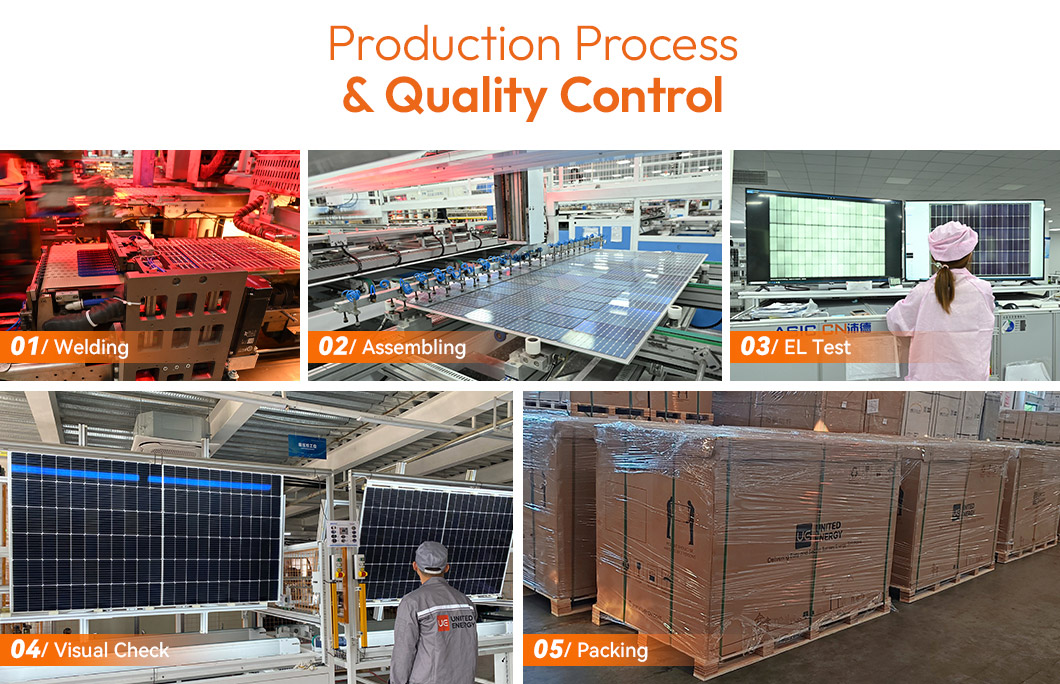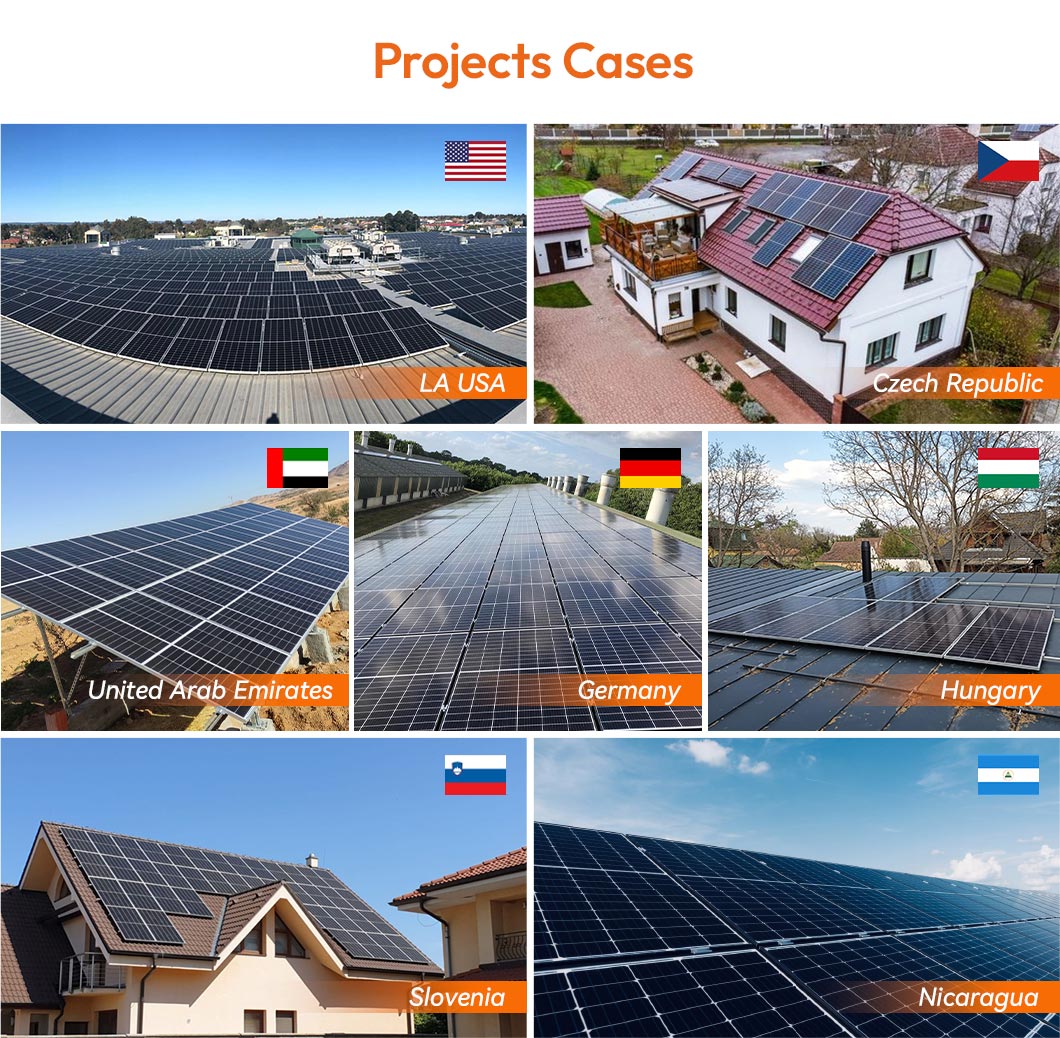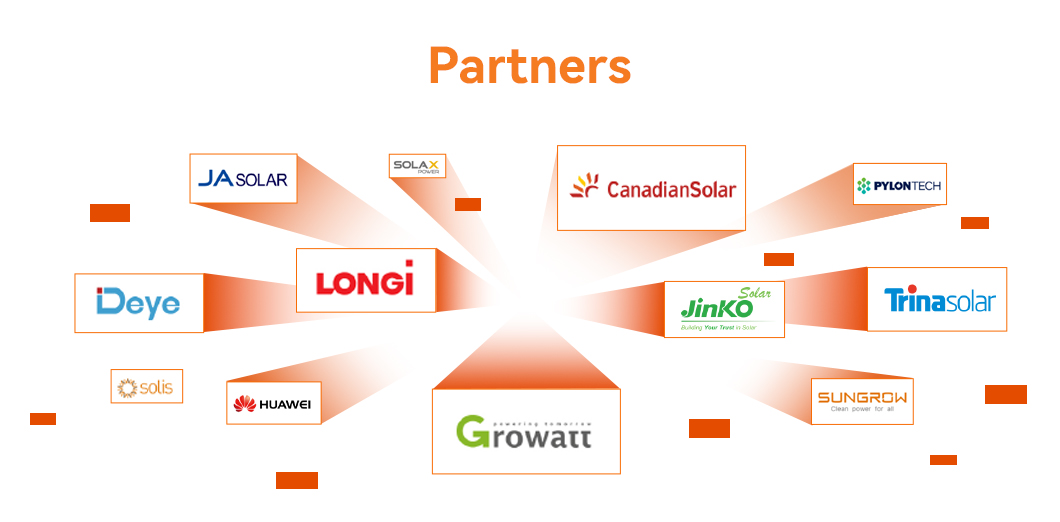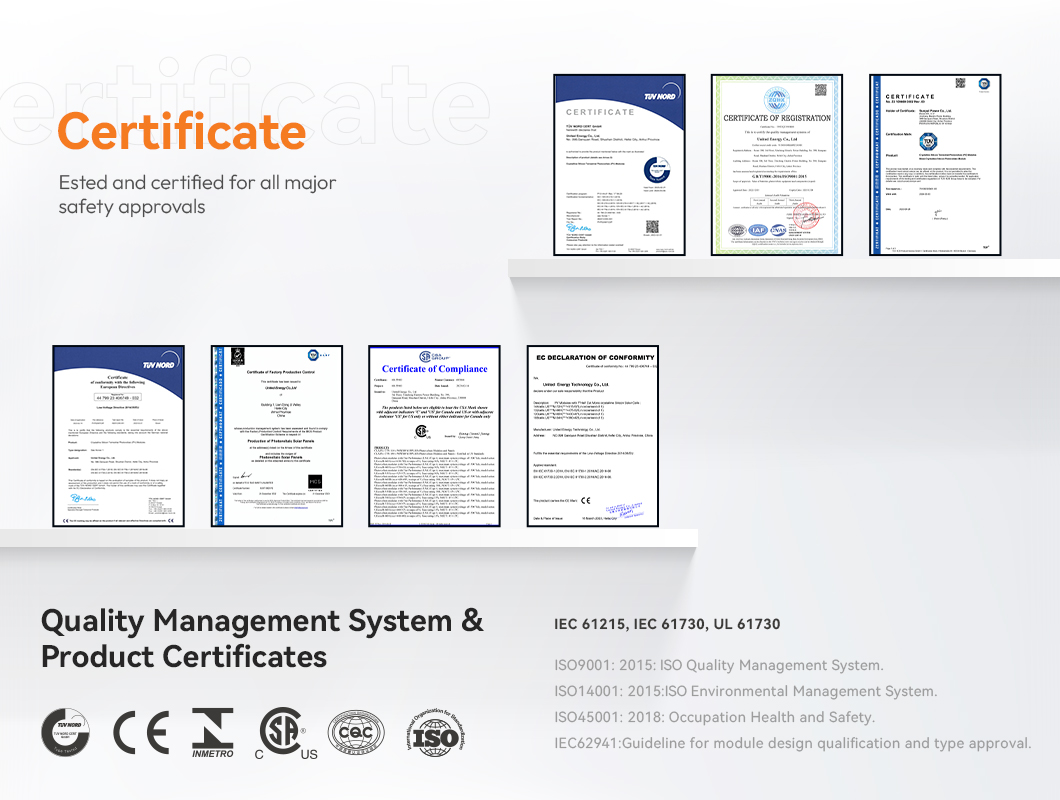Factory Audit;
Goods Inspection;
Third Party Test.
HJT 2.0 Technology
Com bining gettering process and single-side uc-Si technologyto ensure higher cell efficiency and higher module power.
-0.26%C Pmax temperature coefficient
More stable power generation performance and even better inhot climate.
SMBB design with Half-Cut Technology
Shorter current transmission distance, less resistive loss andhigher cell efficiency.
Up to 90% Bifaciality
Natrual symmetrical bifacial structure bringing more energyyield from the backside.
Sealing with PIB based sealant
Stronger water resistance, greater air impermeability to extentmodule lifespan.
Brand :
UEMax. Efficiency :
24.14%Number of Cells :
132Dimension :
2384 × 1303 × 33mmWeight :
37.5kgPower Range :
730-750WWarranty :
25-30 years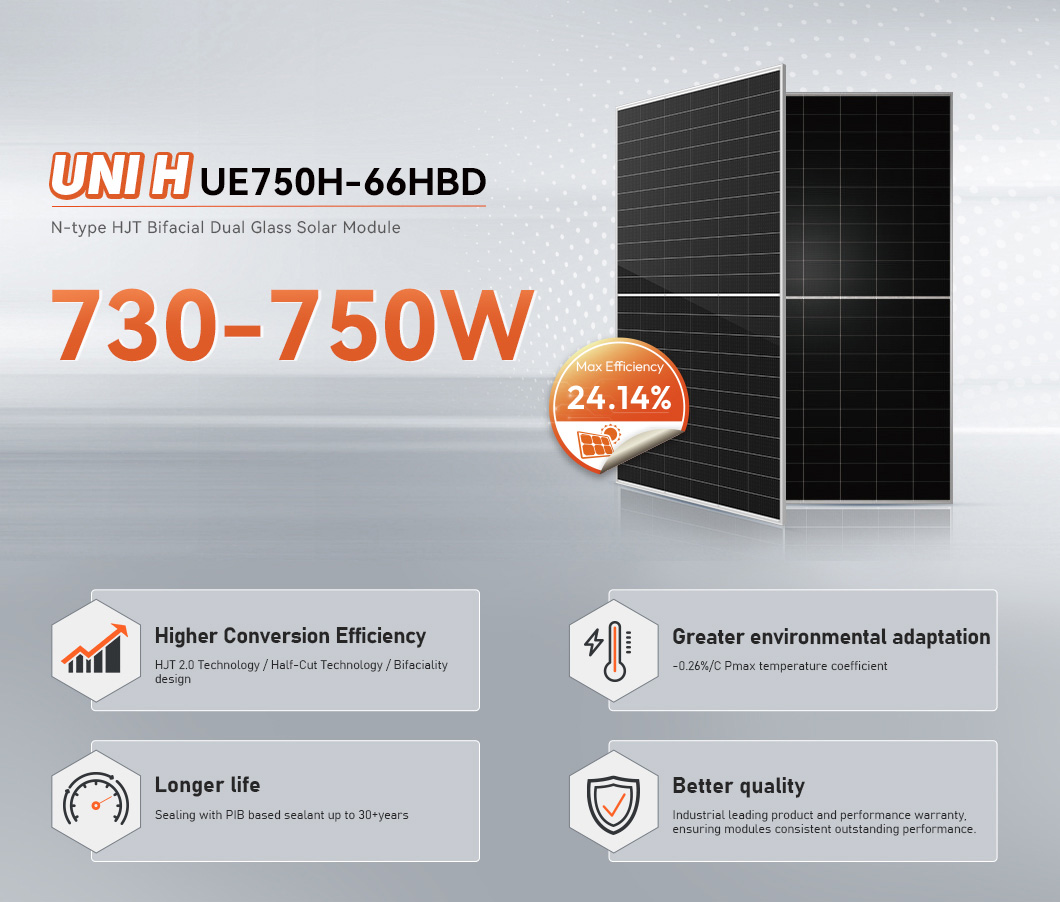
HJT is an abbreviation for Heterojunction Technology, representing an N-type monocrystalline double-sided solar cell. It boasts the advantages of simple processing, high power generation, and low cost per unit of electricity. It is poised to become an industry focal point following PERC cells. This type of solar cell was initially successfully developed in 1990, achieving a conversion efficiency of up to 14.5% for a 4mm2 cell at that time. Through continuous improvements, the conversion efficiency of HJT solar panels has reached 26.5% in 2022, with an average efficiency of 24.95% and a yield rate of 96.4%.

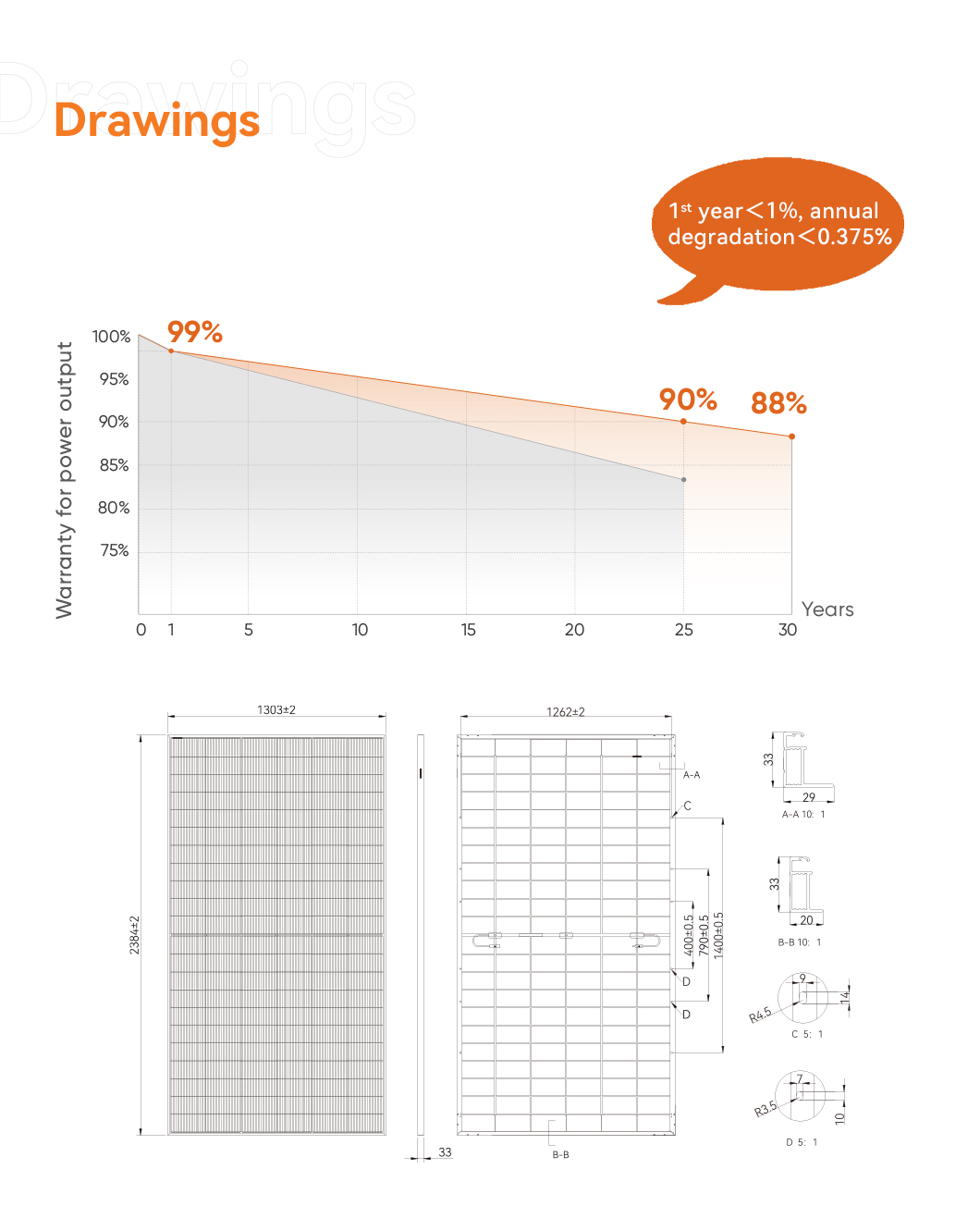
|
Mechanical Characteristics
|
Operating Characteristics
|
||
|
Solar Cells
|
N-Type HJT
|
Operating Module Temperature
|
-40°C ~ +85°C
|
|
No.of Cells
|
132 (6×22)
|
Maximun System Voltage
|
DC 1500 (IEC)
|
|
Dimensions
|
2384 × 1303 × 33mm
|
Maximun Series Fuse Rating
|
35A
|
|
Weight
|
37.5kg
|
Power Tolerance
|
0~+3W
|
|
Glass Thickness
|
(F) 2.0mm AR coated heat strengthned glass ;(B) 2.0mm heat strengthned glass
|
Bifaciality
|
85%±5%
|
|
Frame
|
Anodized aluminium alloy
|
Temperature Characteristics
|
|
|
Junction Box
|
IP68 rated (3 by pass diodes)
|
||
|
Output Cables
|
4mm2, 1400mm (+) / 1400mm (-), Length can be customized |
Nominal Operating Cell Temp. (NOCT)
|
44±2°C
|
|
Connectors
|
MC4 original
|
Temperature Coefficient of Pmax
|
-0.26%°C
|
|
Mechanical load test
|
5400Pa
|
Temperature Coefficient of Voc
|
-0.24%°C
|
|
Packaging
|
33pcs/box, 594pcs/40'HC
|
Temperature Coefficient of Isc
|
0.04%°C
|
|
Electrical Characteristics (STC*/NMOT*)
|
||||||||||
|
Front Side
|
STC | NMOT | STC | NMOT | STC | NMOT | STC | NMOT | STC | NMOT |
|
Maximum Power (Pmax/W)
|
730 | 556 | 735 | 560 | 740 | 564 | 745 | 568 | 750 | 570 |
|
Open Circuit Voltage (Voc/V)
|
50.46 | 48.24 | 50.54 | 48.32 | 50.62 | 48.39 | 50.70 | 48.47 | 50.78 | 48.55 |
|
Short Circuit Current (Isc/A)
|
18.37 | 14.74 | 18.37 | 14.81 | 18.47 | 14.89 | 18.56 | 14.96 | 18.66 | 15.04 |
|
Voltage at Maximum power (Vmp/V)
|
42.22 | 39.80 | 42.22 | 39.89 | 42.32 | 40.00 | 42.41 | 40.11 | 42.51 | 40.23 |
|
Current Maximum Power (Imp/A)
|
17.41 | 13.97 | 17.41 | 14.04 | 17.49 | 14.10 | 17.57 | 14.17 | 17.65 | 14.23 |
| 23.5 | 23.7 | 23.8 | 23.98 | 24.14 | ||||||
|
Bifacial Output-Rearside Power Gain
|
||||||
|
5%
|
Maximum Power (Pmax/W)
|
767 | 772 | 777 | 782 | 788 |
|
Module Efficiency STC (%)
|
24.70 | 24.88 | 25.00 | 25.17 | 25.37 | |
|
15%
|
Maximum Power (Pmax/W)
|
840 | 845 | 851 | 856 | 863 |
|
Module Efficiency STC (%)
|
27.00 | 27.20 | 27.40 | 27.56 | 27.78 | |
|
25%
|
Short Circuit Current (lsc/A)
|
913 | 919 | 925 | 931 | 938 |
|
Module Efficiency STC (%)
|
2.40 | 29.60 | 29.80 | 29.97 | 30.20 | |

